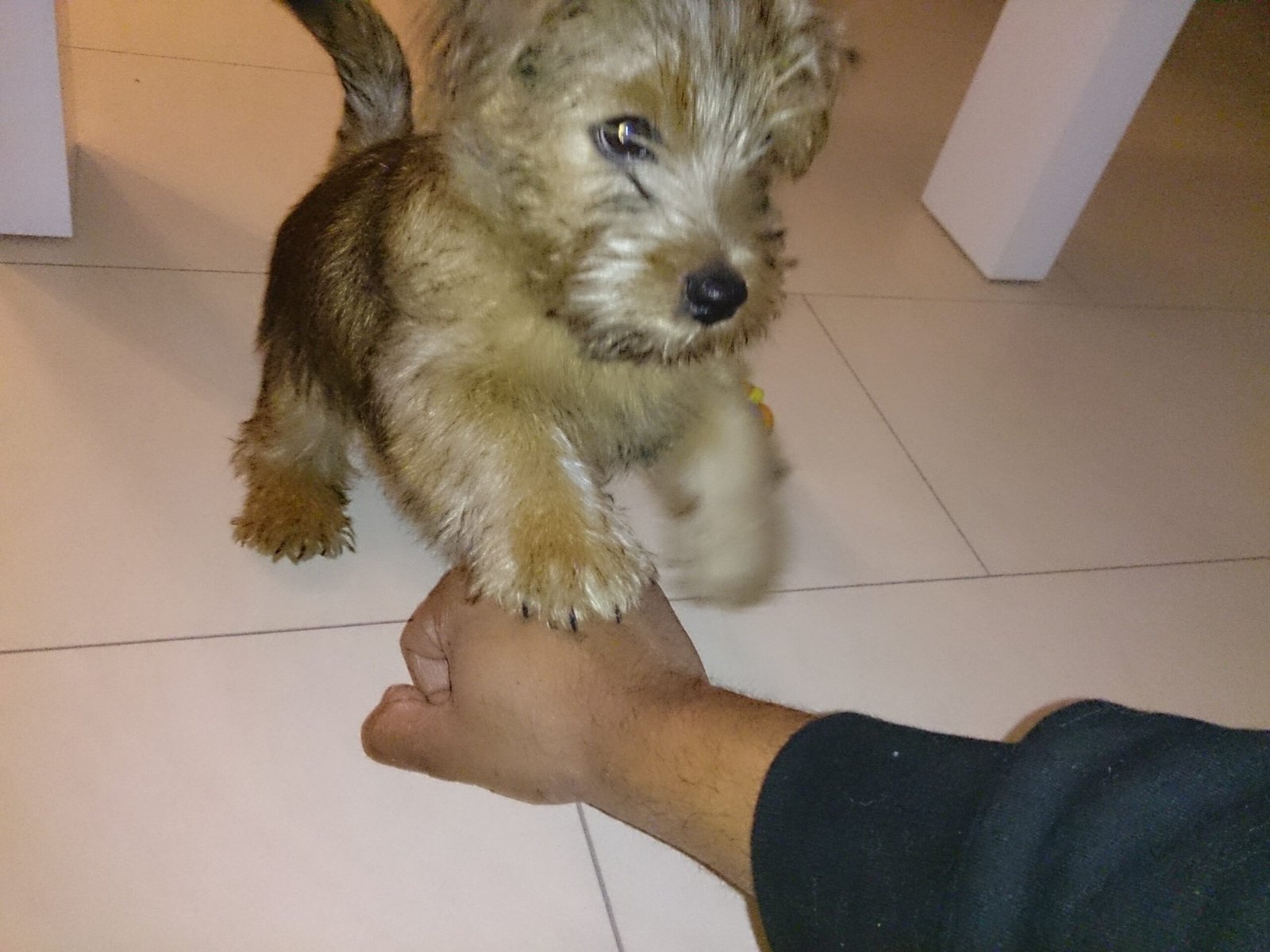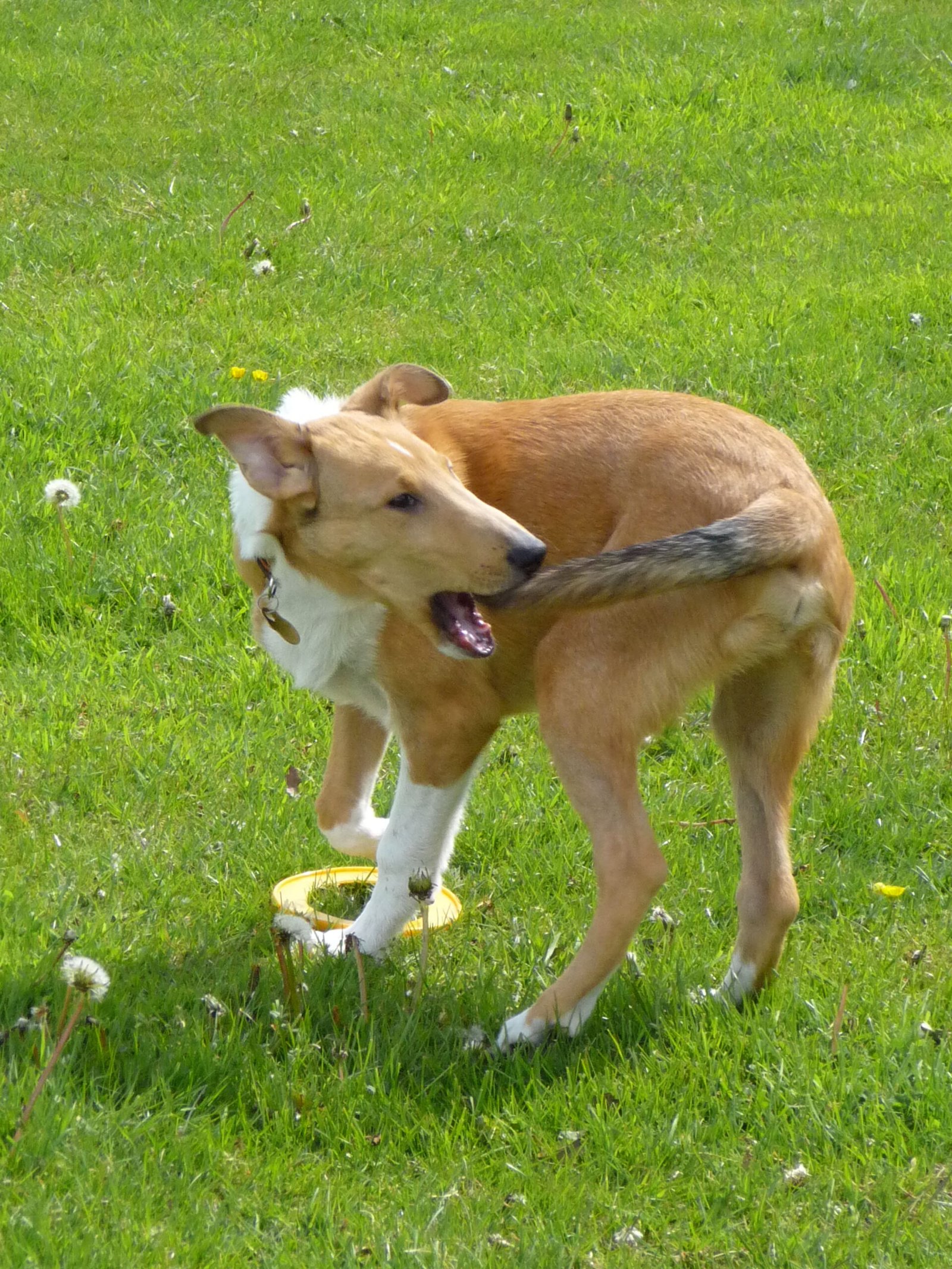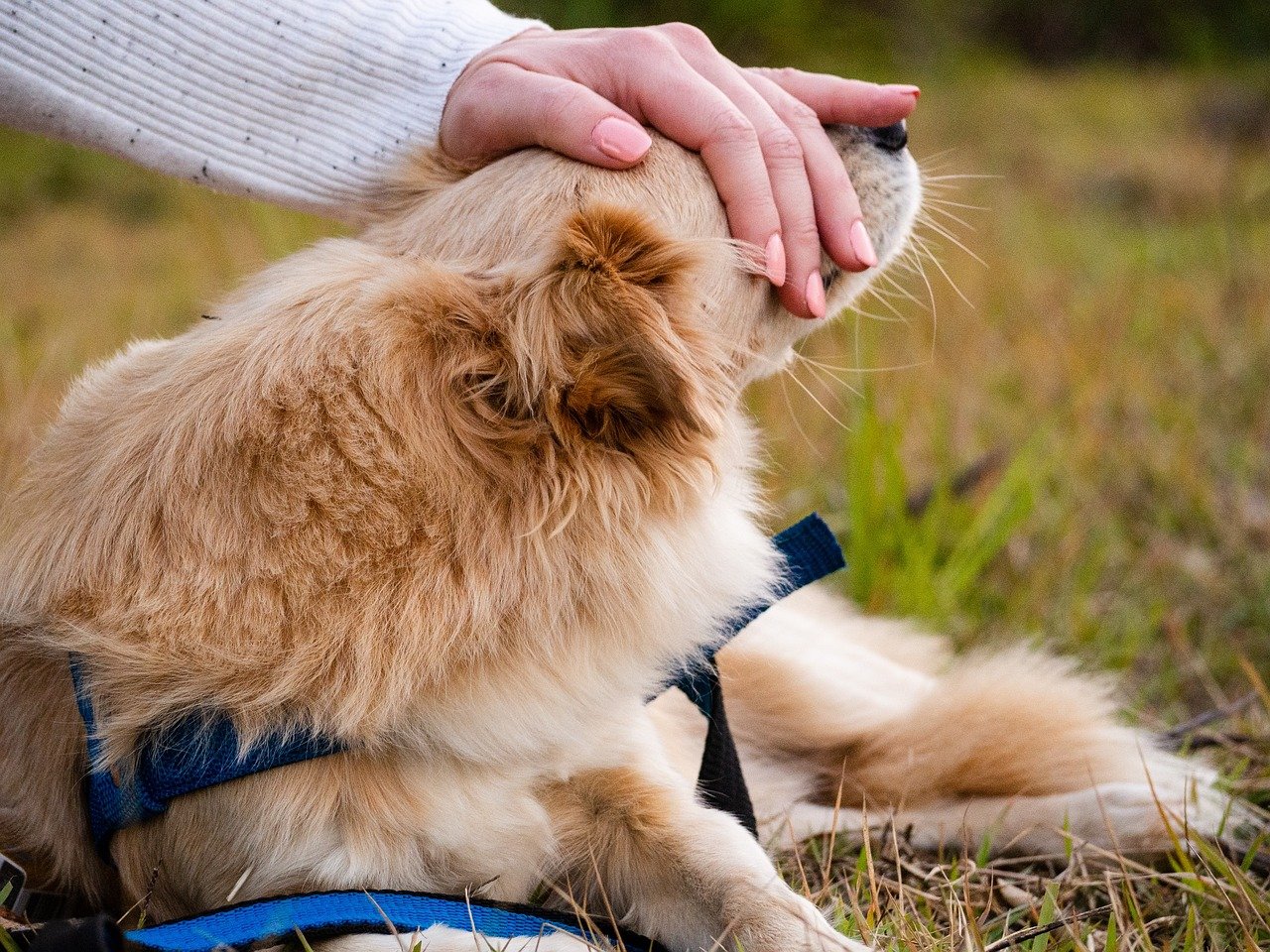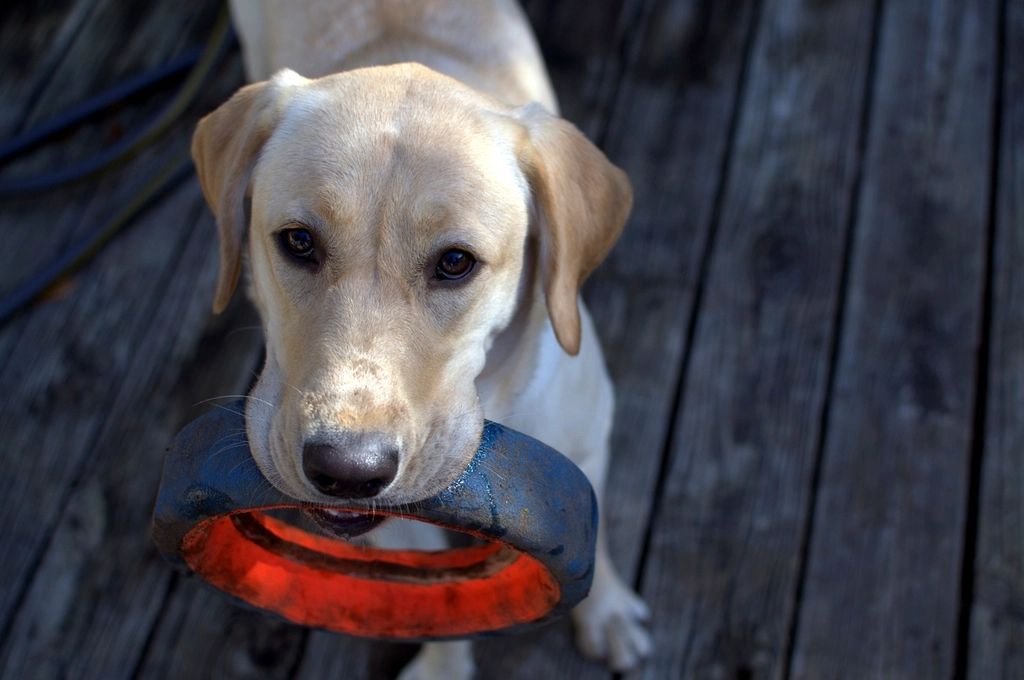Have you ever watched your dog zoom around the house or drop a toy at your feet and wondered what’s really going on inside their furry head? Many of the adorable, quirky things our pups do aren’t just for fun—they’re secret messages, heartfelt requests for love and attention. Sometimes, what seems like mischief or simple play is actually your dog’s way of reaching out, hoping you’ll notice their need for connection. Let’s pull back the curtain on 19 playful dog behaviors that are more than meets the eye. Prepare to see your best friend in a new, deeper light!
1. Bringing You Toys (Even When You’re Busy)
When your dog trots over with their favorite squeaky toy, it might look like they’re just eager for a game. But often, this is a heartfelt invitation for you to join their world. Offering you a toy is a gesture of trust, almost like saying, “I want to share my happiness with you.” If you’re distracted and they persist, it’s a gentle plea for interaction. Dogs crave that sense of partnership, and bringing toys is their way of nudging you to connect, even on your busiest days. Ignore it too long, and you might notice them dropping toys ever closer, sometimes with a hopeful whine.
2. Zoomies: Wild Bursts of Energy

Is there anything funnier than a dog racing around the yard at top speed, tail tucked and eyes sparkling? While zoomies look like pure, silly joy, they can also be a sign your dog is longing for shared excitement. These bursts often happen when you come home or after a period of boredom. It’s your dog’s way of saying, “Let’s play together!”—a vivid call for your attention. If they circle you or try to get you to chase them, it’s even clearer: they want their best friend involved in the fun.
3. Play Bowing With Extra Enthusiasm

The classic play bow—front legs stretched out, rear end in the air—is a universal dog invitation for fun. But when it’s done repeatedly or with extra gusto, it’s more than just a greeting. It shows eagerness for you to interact and an emotional need for your presence. Sometimes, a dog will even bark or wiggle while bowing, making it impossible to ignore. They’re not just saying, “Let’s play,” but also, “I really want you with me right now.”
4. Following You Everywhere
Does your shadow have four legs? Dogs that follow their humans from room to room aren’t just curious—they’re expressing a deep desire to be close. This behavior often masks a longing for reassurance and companionship. Even if they’re not actively playing, their presence is a gentle reminder: “I want to be wherever you are.” Sometimes, they’ll nudge your hand or rest their head on your lap, hoping you’ll pause and give them that attention they crave.
5. Pawing or Nudging for Attention

A soft paw on your leg or a gentle nudge with their nose is a classic canine way of seeking contact. It’s playful, sure, but it’s also a clear sign: “Notice me!” When ignored, dogs may escalate to more persistent nudging or even vocalizations. These gestures, while adorable, are their way of reaching out for connection. They’re hoping for a scratch, a kind word, or simply a few moments of your undivided attention.
6. Spinning or Dancing When You Get Home
Few sights are sweeter than your dog spinning in circles or tiptoeing with excitement as you walk through the door. This joyful display isn’t just about greeting—it’s about celebrating your return and expressing how much your presence matters. Dogs who do this are often those who feel most attached and sometimes most anxious in your absence. Their exuberant welcome is a plea: “I missed you—let’s reconnect!”
7. Mouthing or Gentle Nibbling
Some dogs gently mouth your hand or even your clothing during play. While it might seem mischievous, this behavior is rooted in puppyhood, when littermates use their mouths to bond and communicate. Dogs who do this are reaching back to those early feelings of connection. It’s a playful, affectionate gesture: “I trust you, and I want to feel close to you.” If your dog mouths softly and looks up with loving eyes, they’re hoping for a little extra love.
8. Barking for Engagement

Not all barking is about warning or alarm. Often, a playful bark—especially when your dog is wagging and bouncy—is an invitation. It’s their way of saying, “Pay attention to me!” Some dogs develop a special “play bark” that’s higher-pitched and almost sounds like laughter. If your pup barks and looks at you expectantly, they’re hoping you’ll join the game or just take a moment to focus on them.
9. Rolling Onto Their Back (Belly Up)
A dog flopping onto their back is both a sign of trust and a request for interaction. They’re exposing their most vulnerable side, signaling that they feel safe and want affection. Sometimes, they’ll wiggle or paw the air, making it impossible to resist giving them a belly rub. This playful move is more than seeking physical pleasure—it’s a way to bond and connect with you on a deeper level.
10. Stealing Your Belongings

Shoes, socks, remote controls—dogs have a knack for swiping things that smell like you. While it’s easy to label this as naughty behavior, it’s often a sign of your dog’s need for connection. They’re surrounding themselves with your scent, hoping to feel close when you’re not nearby. Sometimes, they’ll even bring the stolen item to you, tail wagging, as if to start a game or simply get your attention.
11. Licking Your Face or Hands Excessively

A dog’s licks can feel like kisses, and in a way, they are. Dogs use licking as a form of social bonding, much like wolves and wild canines do with their pack. When your dog licks you enthusiastically, they’re reaching out for closeness. It can also be a way to soothe themselves or you if they sense you’re stressed. So, next time your pup showers you with kisses, know that it’s more than a greeting—it’s a heartfelt plea for connection.
12. Whining or Sighing Near You
Sometimes, dogs let out a long sigh or a quiet whine when they settle at your feet or beside you. These sounds might seem subtle, but they’re powerful signals. Whining is often a request for attention, while sighing can show both contentment and a wish for more engagement. If your dog looks at you with soulful eyes and lets out a little whimper, they’re hoping you’ll notice and respond with affection.
13. Jumping Up Playfully
While many people train their dogs not to jump, playful jumping is often a burst of excitement and a need for closeness. Your dog is trying to get face-to-face, much like puppies do with their mothers and siblings. It’s a joyful, energetic expression: “I’m here! Notice me!” If your dog jumps up and then dances around you, they’re hoping for a bit of rough-and-tumble fun or just your loving attention.
14. Playfully Nipping During Games

Sometimes, during a game of tug or chase, a dog might gently nip at your fingers or clothing. This isn’t aggression—it’s an echo of how dogs play with each other. It’s their way of drawing you into their world, seeking that physical, interactive bond. Playful nipping is a sign they feel safe with you and want to deepen your connection through shared play.
15. Chasing Their Tail When You’re Watching

Tail chasing can be a silly, hilarious sight, but when your dog does it while glancing at you, it’s often a performance. They’re trying to catch your eye, hoping for a reaction, laugh, or even a game. Dogs are keen observers and quickly learn what gets your attention. A dog who chases their tail when you’re nearby is likely saying, “Look at me! Let’s play or interact!”
16. Leaning Into You or Pressing Against You
When your dog leans their body weight into your leg or presses against you on the couch, they’re seeking physical closeness. This behavior is especially common in more sensitive breeds, but all dogs use it as a way to feel secure and connected. It’s their way of saying, “I need you near.” Sometimes, they’ll combine this with a sigh or a loving gaze, deepening the emotional request for your presence.
17. Gently Grabbing Your Arm or Sleeve

Some dogs develop the habit of gently taking your hand, arm, or sleeve in their mouth during play. This isn’t a sign of dominance but rather a throwback to puppy play with littermates. It’s a tactile way of seeking connection, almost like a child reaching for a parent’s hand. If your dog does this, they’re looking for reassurance, affection, and a feeling of togetherness.
18. Bringing You “Gifts” From Outside

Whether it’s a stick, a leaf, or (sometimes unfortunately) something less pleasant, dogs often bring their humans little treasures from the yard. This isn’t just a quirky habit—it’s a way of sharing their world and inviting you into their experiences. By offering you a “gift,” your dog is reaching out, hoping for praise, attention, or simply a shared moment of discovery.
19. Sitting on Your Feet or Lap

Nothing says “you’re mine” quite like a dog plopping themselves onto your feet or lap. This behavior is both protective and affectionate. It’s a way for your dog to claim closeness, to ensure they’re physically connected to you. Dogs who do this are often those who crave reassurance and want to make sure you’re paying attention to them, even when you’re relaxing or distracted.
Behind all the zoomies, tail wags, and silly antics, your dog might be saying something deeper: “I need you.” These playful behaviors aren’t just for fun—they’re often their way of reaching out for connection. When you notice the signs and respond with time, affection, or engagement, you’re speaking their language. So the next time your pup gets extra goofy, remember—it might just be their sweetest way of asking for your heart. What playful behavior surprised you the most about your dog’s need for connection?

Andrew Alpin from India is the Brand Manager of Doggo digest. Andrew is an experienced content specialist and social media manager with a passion for writing. His forte includes health and wellness, Travel, Animals, and Nature. A nature nomad, Andrew is obsessed with mountains and loves high-altitude trekking. He has been on several Himalayan treks in India including the Everest Base Camp in Nepal.





